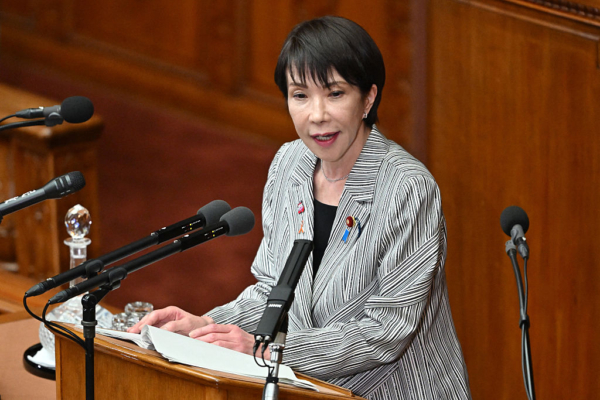Japanese Prime Minister Sanae Takaichi approved on Friday a comprehensive economic stimulus package worth around 21.3 trillion yen (approximately $1.35 trillion). This is the first major policy of Prime Minister Takaichi’s tenure, aimed at easing the pressure of rising prices on families and accelerating investments in areas such as semiconductors, artificial intelligence (AI), and shipbuilding.
Including expenditures from local governments and the private sector, the total scale of the package is expected to reach 42.8 trillion yen (approximately $272.3 billion).
The government plans to compile a supplementary budget of 17.7 trillion yen (approximately $112.6 billion) to support this package, exceeding the 13.9 trillion yen announced by former Prime Minister Shigeru Ishiba last year, reflecting Takaichi administration’s advocacy for proactive fiscal spending.
The allocation of funds in this stimulus package focuses on two core areas: alleviating the impact of price increases on families and enhancing the country’s long-term economic growth potential.
The stimulus package is set to allocate 11.7 trillion yen for family support and tax reduction measures. Specific measures include providing a cash subsidy of 20,000 yen per child and issuing 3,000 yen “rice vouchers” or other discount coupons per person.
In terms of energy, the government will provide a total of 500 billion yen in electricity and gas subsidies, applicable for the first three months of next year, estimated to reduce average household energy expenses by around 7,000 yen.
Furthermore, the package includes 2.7 trillion yen in tax reduction measures, including the elimination of temporary gasoline taxes and adjustments to tax-free income thresholds to ease the burden on citizens.
The central government will also allocate 2 trillion yen in subsidies to local governments to implement their own measures to address rising food prices.
A total of 7.2 trillion yen will be invested in areas such as semiconductors, artificial intelligence, and shipbuilding in the package. The Takaichi government believes that these critical industries can support economic security and achieve long-term growth. The government emphasizes that these investments have a dual purpose of crisis management and enhancing competitiveness.
Regarding strengthening defense capabilities, the Takaichi government stated that the target of defense-related expenditures as a percentage of GDP reaching 2% by fiscal year 2027 will be implemented earlier within this fiscal year.
To support the stimulus package, the Takaichi government plans to prepare a supplementary budget of 17.7 trillion yen. The Cabinet is expected to approve the supplementary budget on November 28, aiming for parliamentary approval by the end of this year.
Funding for this package will come from expected increases in overall tax revenues reflecting inflation, as well as additional issuance of government bonds.
Due to market concerns about the large-scale stimulus plan, the yen exchange rate has fallen to a 10-month low, and the yield on ultra-long Japanese government bonds has risen to record highs. Some economists warn that implementing a stimulus package amid rising inflation may further drive up prices.
However, in response to concerns from the public about increased government bond issuance leading to fiscal deterioration, Prime Minister Sanae Takaichi stated: “The amount of government bonds issued after the compilation of the supplementary budget is expected to be lower than last year’s revised amount of 42.1 trillion yen, and the content has been fully considered for the sustainability of public finances. Conforming to the goal of higher economic growth, the government will reduce the ratio of government debt to GDP to achieve fiscal sustainability and ensure market confidence.”

